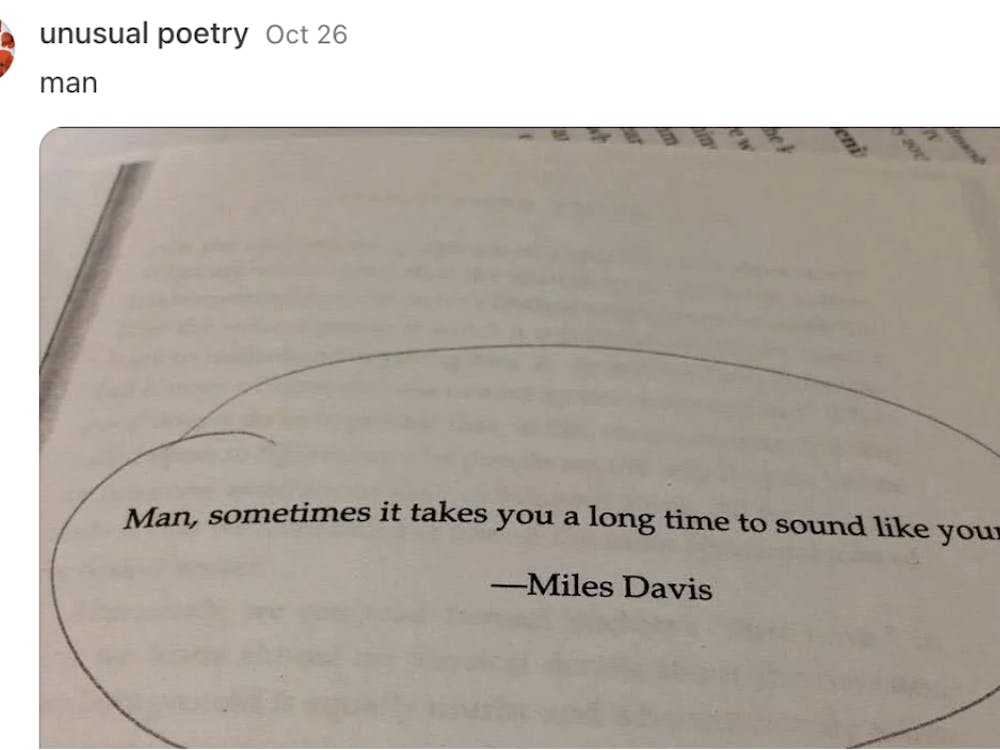When I arrived on campus for freshman orientation in August, I was apprehensive. College was like nothing I was prepared for, it was a whole new space in which I needed to reestablish myself. But I quickly grew comfortable and was pleasantly surprised at all the social issues that the University seemed to take responsibility for.
From insightful discussions in my classes to attending mandatory Bystander Intervention Training (BIT), I felt social issues were being addressed in an appropriate and refreshing way. This is why I was so disappointed at the superficial and aimless nature of the Diversity and Inclusion Training program required of all freshmen.
Going into the training, I thought I would be comfortable sharing some of my experiences regarding my multi-faceted identity and how it informs every aspect of my life.
However, as the training went on, I quickly understood that there was nothing at all to be gained from doing this. The atmosphere in the room was not at all conducive to any sort of actual discussion. Instead, it just felt like a quiet room with too many people in it.
Most of the exercises barely brushed the surface of how identity affects students’ behaviors or perspectives and how social forces influence our identities. For two hours, I sat waiting for when the actual diversity and inclusion part of the training would begin, and it never did.
Some of my peers were probably worse off having gone through the training. For an exercise in which everyone had to move and stand under an identity they related most with, one kid stood in place the whole time, shrugging. That kid, who probably could have benefited from learning about different perspectives, most likely came out of the experience even more disillusioned about diversity than before.
Not only did the program make students uncomfortable and less likely to engage in productive dialogue, but it was also missing the key takeaway — that with diversity comes great struggle, that living and learning in a space so rich with different races, orientations, backgrounds and perspectives means that not everyone will understand each other and that in the real world, outside of our textbook definitions and cozy brave spaces, some misunderstandings are deadly.
Simply knowing the dictionary defintion of the word “diversity” does not in any way expose us to its imperfect and crucial existence. Inclusion in today’s landscape means to be challenged, to be confronted.
Inclusion is to learn the nuances of lives we will never live, to practice empathy and self-reflection and to engage with our peers in ways that we may not have previously been exposed to.
How are we supposed to truly understand diversity and inclusion without any mention of the current state of affairs of racial, sexual or gender identity in this country? Or if the facilitator completely skips the social justice part of the PowerPoint for the sake of time?
I would love to say that no program could ever fully wrap itself around all the facets of our complex identities, and good for Hopkins for trying, but sadly I can’t. The two hours I spent in the AMR I Multipurpose Room felt like less of an attempt at connection and more like the haphazard result of an institution scrambling for credibility.
I didn’t leave the room feeling disgruntled or even mildly put off; I left feeling slightly ashamed, ashamed that for all of the richness the Hopkins community has to offer, this was the University’s attempt at engaging with it, ashamed at the sheer amount of unrealized struggle and beauty that sat in a circle around me, expected to tell their stories using iClickers as if that would make their voices heard, as if an unfamiliar moderator reading slides full of information will somehow enlighten their peers to what they have felt all their lives in a way only they understand.
If the University is to require its students to undergo mandatory diversity training, I demand that it be genuine. Anything else is an insult to the students who it is supposed to benefit.
These statements may seem like a harsh overreaction regarding an institution that does provide many resources for social action, but I refuse to have my confusing and complex identity be erased and drawn in another time.
A program that is intended for the entire freshman class must be truly reflective of the values the University looks to represent. To the Hopkins administration I say: Either you want us all to be woke warriors of social justice or you don’t — pick one and try harder.
Allison Jiang is a freshman Writing Seminars major from Holmdel, N.J.




